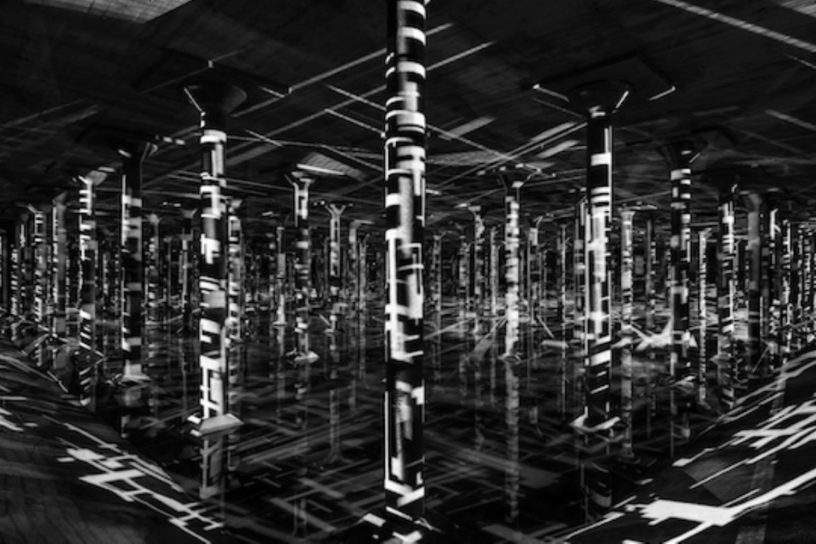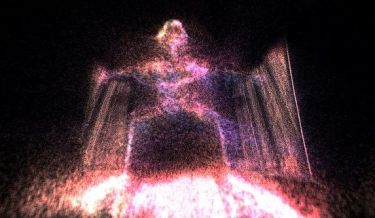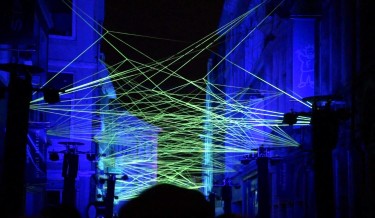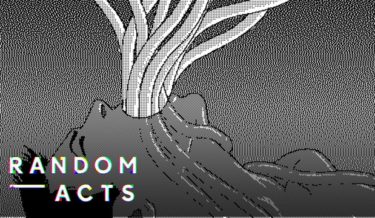With its Mondrian-esque raindrops and simulated rain sounds, the 2009 debut of Venezuelan artist Magdalena Fernández‘s 2iPM009 installation was meant to be projected onto screens and fill a gallery space’s acoustic environment. But when Fernandez was asked if she would consider re-envisioning it as an immersive experience inside the Houston Cistern at Buffalo Bayou Park, she saw a chance to, quite literally, give the work new dimensions.
Now, Fernández’s multidirectional flashes of light flicker and dance across hundreds of columns inside a dark architectural void, while the simulated raindrops echo and reverberate throughout the massive space. The overall effect created by this remixed installation is that of an audiovisual matrix. Given the installation’s new environment inside the decommissioned facility, she decided to rename it Rain.
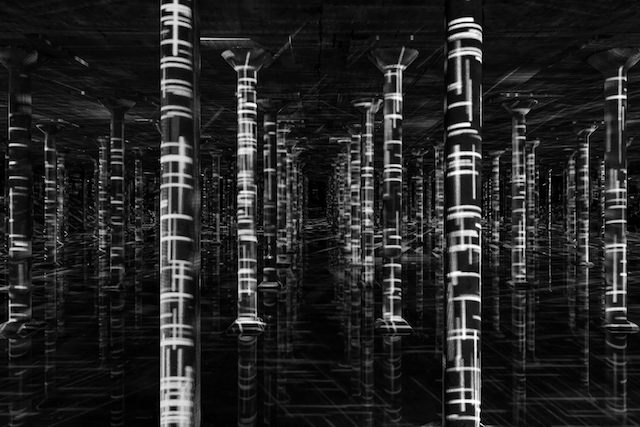
Fernández, who draws inspiration from minimalist and Bauhaus points and lines, as well as from nature, originally made 2iPM009 for a biennale in Ecuador.
“The sound gave me the idea, and it’s not a real rain sound—it was made by Perpetuum Jazzile, a choir from Slovenia who make the sound with their hands,” says Fernández, who asked the group to use their performance in 2iPM009. For her, the recording brought a different energy to the installation.
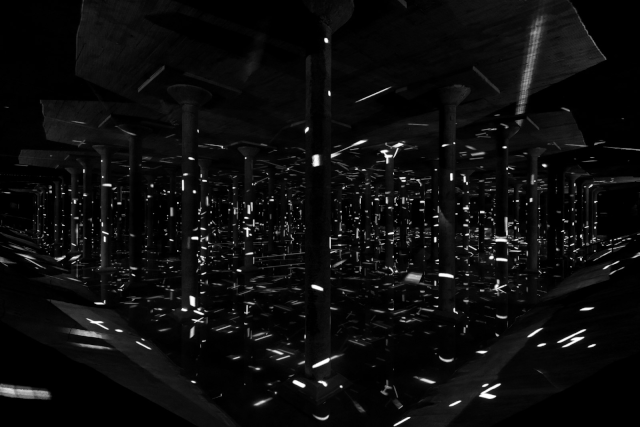
The piece toured for several years across various countries before the Museum of Fine Arts Houston (MFAH) purchased the work, adding it to its permanent collection. Fernández says that 2iPM009’s transformation into Rain started when Buffalo Bayou Park asked MFAH for help installing an art installation in the Houston Cistern. The museum responded by proposing Fernández’s 2iPM009.
Before reworking 2iPM009, Sicardi Gallery and the Museum of Fine Arts ran a test projection of it in the Houston Cistern to see if it would work. Happy with the results, they called Fernández to see if she approved. She was unsure how the images, designed for screens, would look projected—with many of them out of focus—onto large columns set at various depths, as well as onto the ceiling and floor. After seeing her installation inside the cistern, however, Fernández knew she had an opportunity to make it into a quite different piece of work.
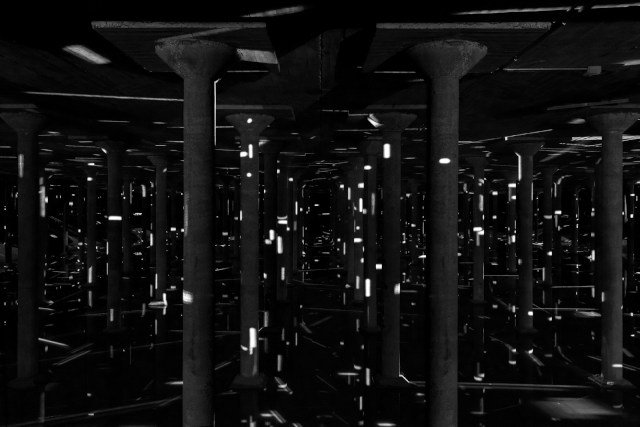
To fit the visuals into the space, Fernández did some tinkering with the video rendering. She then decided to use multiple projectors to fill the Cistern’s 87,500 square feet of space and 221 two-story columns.
“It’s completely different now,” says Fernández. “The size of the space already gives you the feeling of being in another place, and the echoes of 70 seconds seem more real. The sound keeps reverberating, so you feel like the storm is coming from far away and is arriving.”
“The idea of being in a huge space where the central issue is nature is for me very special,” she adds. “I made this piece in 2009, but it really feels like I made it for this space … the Cistern is the perfect match of modern art and nature.”
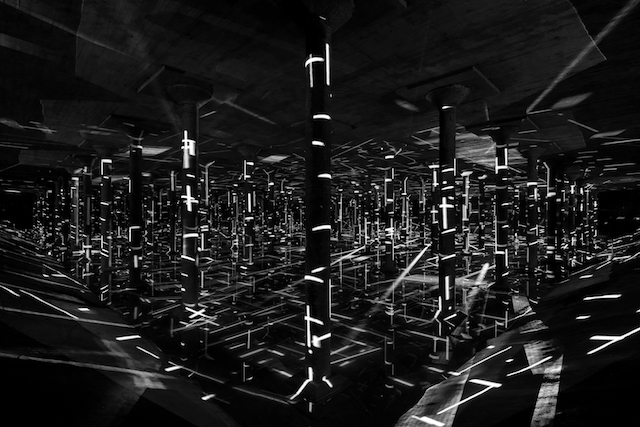
Fernández likens the installation to being inside a church, but she also is interested in how it now exists inside a water utility space originally designed for human survival. She feels that the installation enhances the space’s natural power.
“Also, for me, it was like giving many, many new meanings to [the installation],” she says. “So the piece becomes stronger, too. I’m really grateful and happy that the museum did this, and that the Buffalo Bayou Park Cistern supported it.” See Rain roar to life in the video below:
Rain: Magdalena Fernández at the Houston Cistern from magdalena fernandez on Vimeo.
After working on Rain, Fernández is considering working on audiovisual installations in other architecturally challenging and immersive spaces. Fernandez’s current exhibition Flexible Structures is on view until March 11th at Sicardi Gallery in Houston. Click here to see more of Magdalena Fernández’s work.
Source Creators
Follow our FB page Lumen

